Editorial note: Although the functionality here works on both Symbian and Windows Phone (with a few minor functionality differences), I've chosen to demonstrate it on the more modern latter platform. Download links for both platforms are provided below.
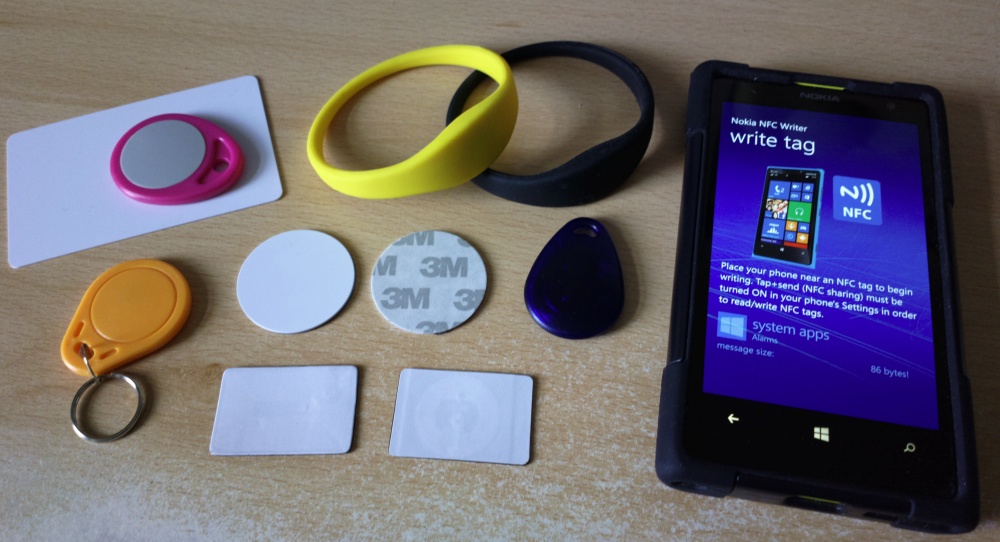
Part of the problem with NFC take-up is that it can do so many things. Many have fixated on it being the golden ticket to quick and easy contactless payments from a phone, but such solutions are far more complicated than is often realised, in terms of tying together all the interested parties, and this side of things seems to have stalled. Others will know NFC from quick and easy pairing with Bluetooth headsets and speakers, and this side of things has been a lot more successful. Still others will have used NFC to share items (e.g. a photo) between phones, though the actual transfer mechanisms (Bluetooth, Wi-fi) and implementation has varied according to platform and even within a platform (e.g. Android), so success hasn't always been guaranteed.
However, one of the lowest-tech and simplest uses for NFC though is in a phone picking up information from a 'tag', usually embedded in a poster/sticker, in a business card or badge. The tag is indicated with a logo or arrow or other instruction and you tap the appropriate bit of your NFC-equipped phone to the tag.
And, as you'll have seen from the idea picking up steam in the Android world from manufacturers like Sony and Samsung, this information doesn't have to be a URL or contact data, it can also be (admittedly platform specific) shortcut to an application or setting. The other really important thing to note is that any NFC-equipped smartphone can not only read from NFC tags, it can also program them, at least it can when equipped with the right application.
Here I'm experimenting with the free Nokia NFC Writer on a Windows Phone-powered Lumia 1020, but it could equally well be (the freemium) NFC Interactor on Symbian, download it here in the Nokia Store. I did have a few specific uses in mind - here are four of them...
Instant access to Flight mode when heading to bed
This is a good example of a highly location-specific action that's well suited to automation by tapping the phone on a tag, in this case stuck to the leg of my bedside table:

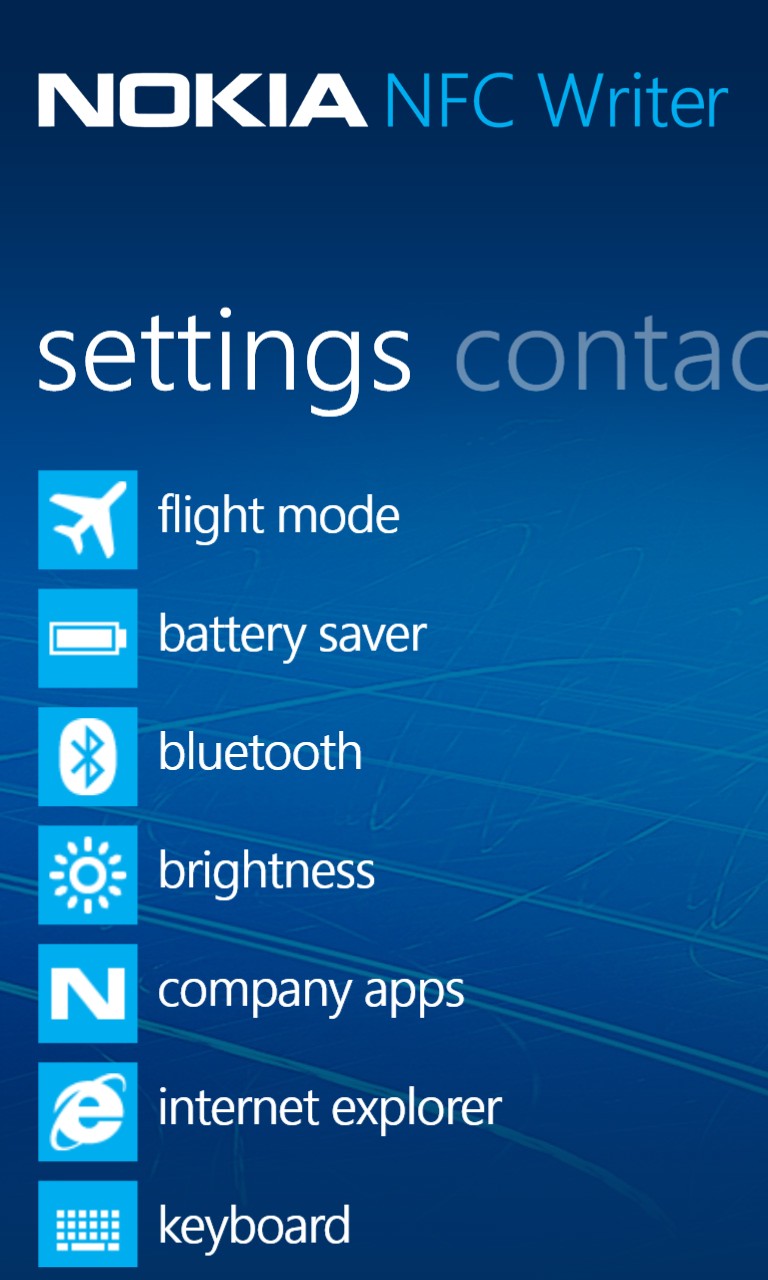
NFC Writer's main menu: tap on 'Compose' and then swipe to the right pane ('Settings'), picking 'flight mode'...
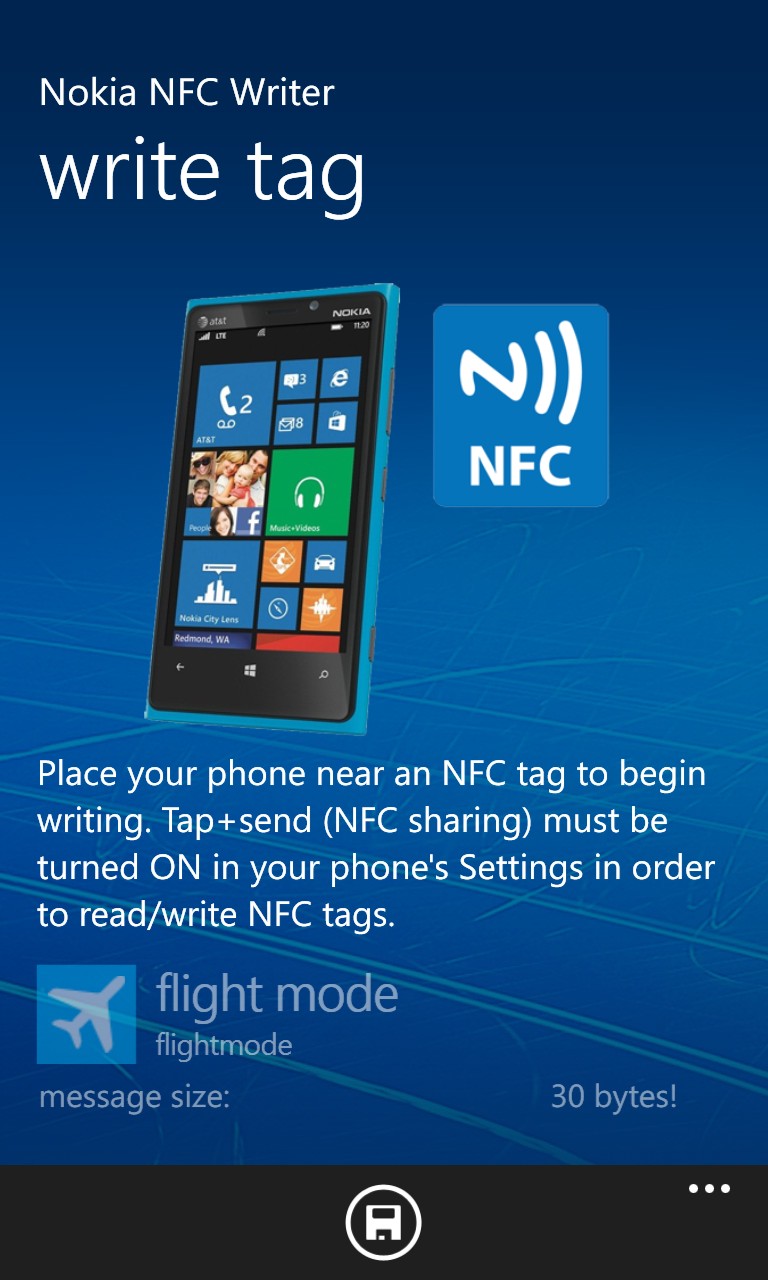
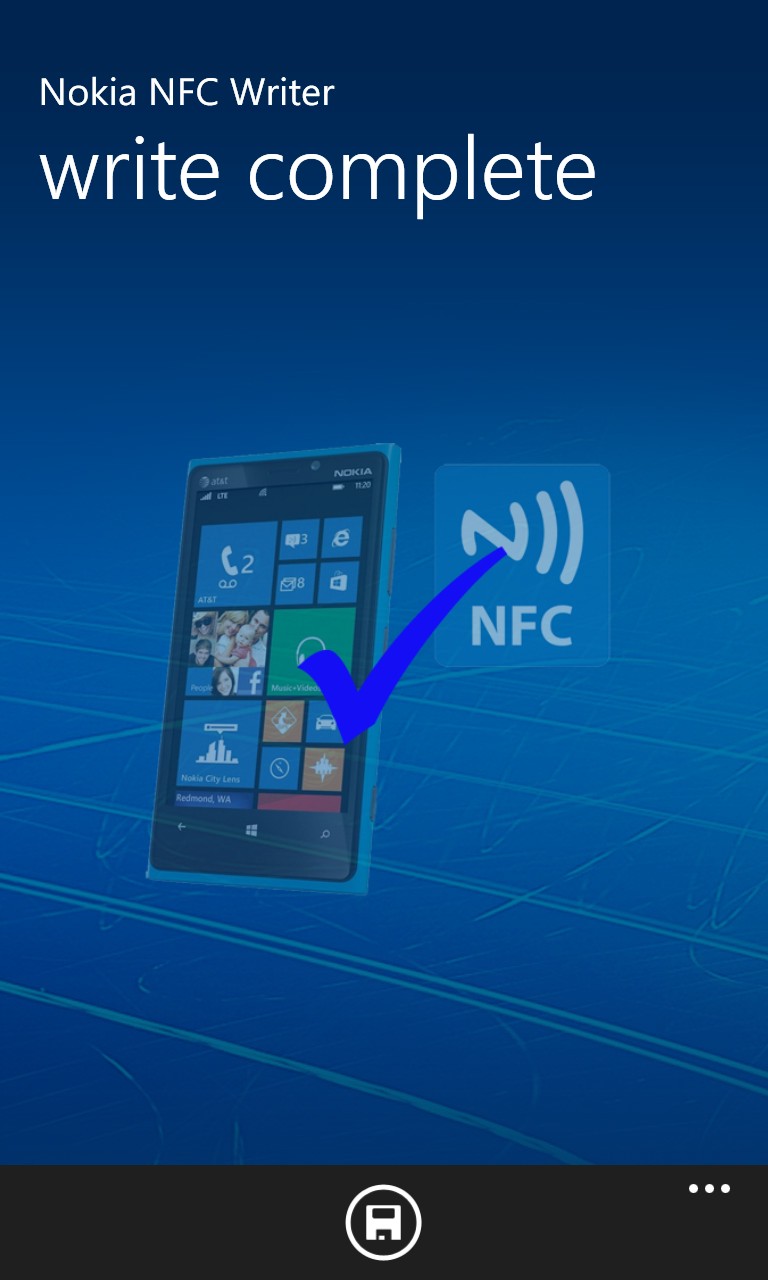
Find yourself a blank NFC tag (which could, for example, be in sticker, keyring tag or wristband form) and hold it in place for a second under your phone's NFC antenna. In the Lumia 1020's case, this is near the top, above the camera island, but it does vary according to device. The transfer is very quick - only 30 BYTES.
In case you're wondering, the Save icon is for saving this operation to NFC Writer's 'Favorites' list, for writing another similar tag in the future.
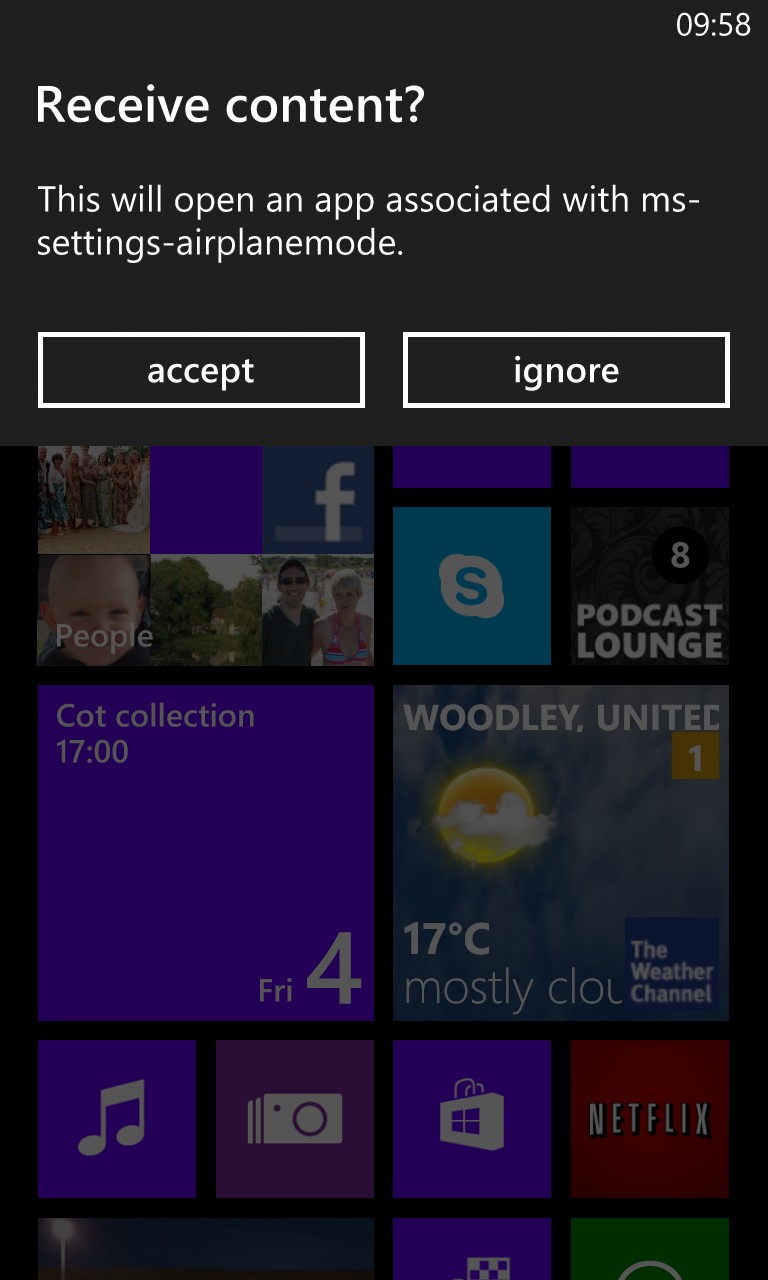
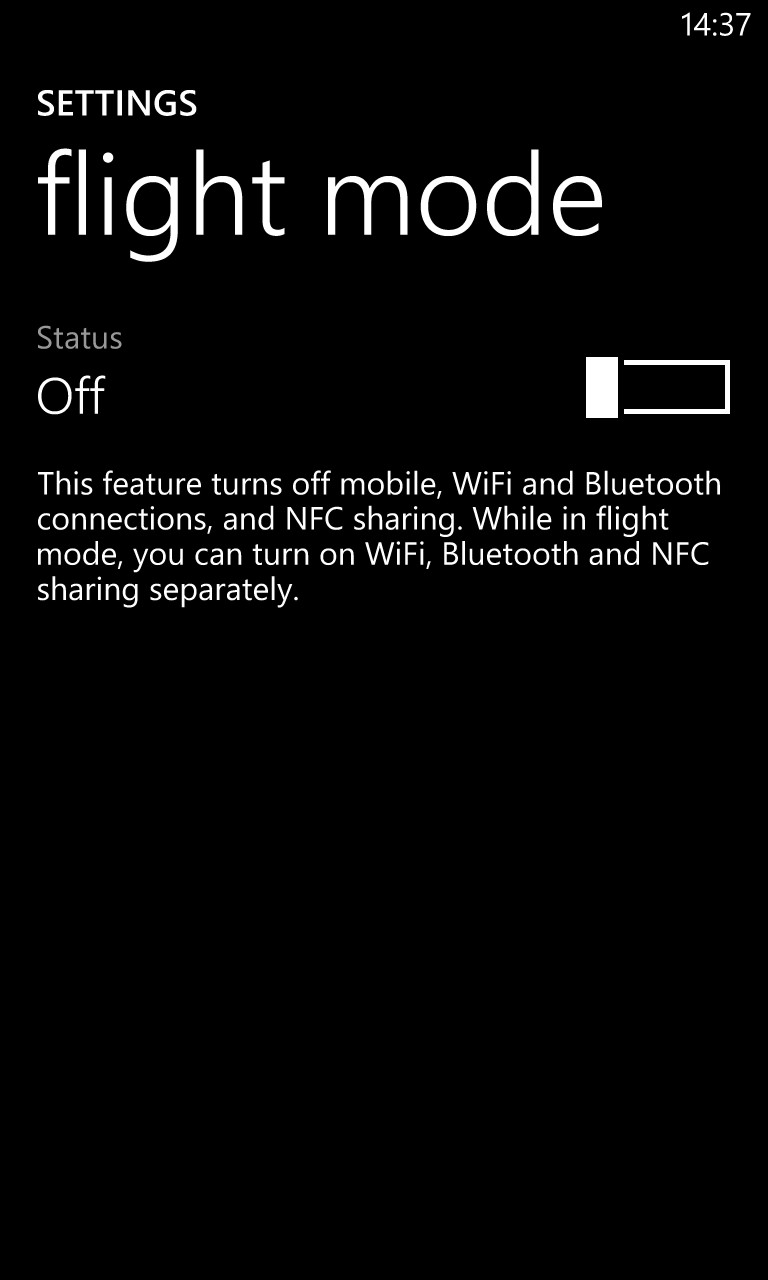
OK, bedtime, so I tap the smartphone to the tag, which is now stuck to my bedside table. The somewhat generic dialog that pops up isn't very user-friendly, admittedly, but you can't really go straight to a linked URL or application without any generic interstitial dialog, just in case what you tapped on was not quite what you expected it to be (especially if a link to a URL hosting malware). In this case, 'accept' goes straight to the Windows Phone Flight mode setting required.
Of course, there's a slight gotcha in this particular use case, in that the same tag can't be used to switch the phone out of flight mode. Because, in flight mode, all the radios are off, including NFC! Sigh....
Sending my contact card
Especially useful at an event would be a tag on (for example) the small wristband shown in the opening photo - a new contact could just tap their phone to the band to receive my essential details.

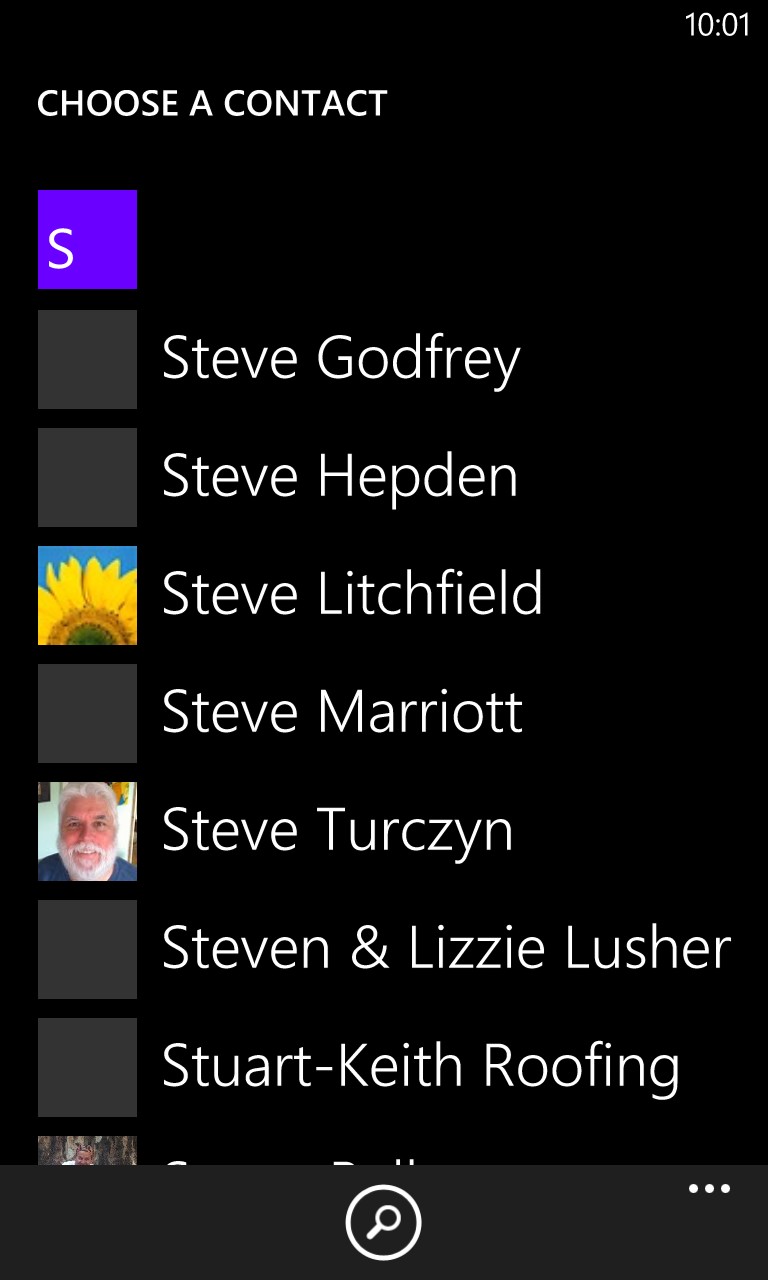
In this case 'share contact' on this pane should do the trick. You're prompted to pick a contact, of course...
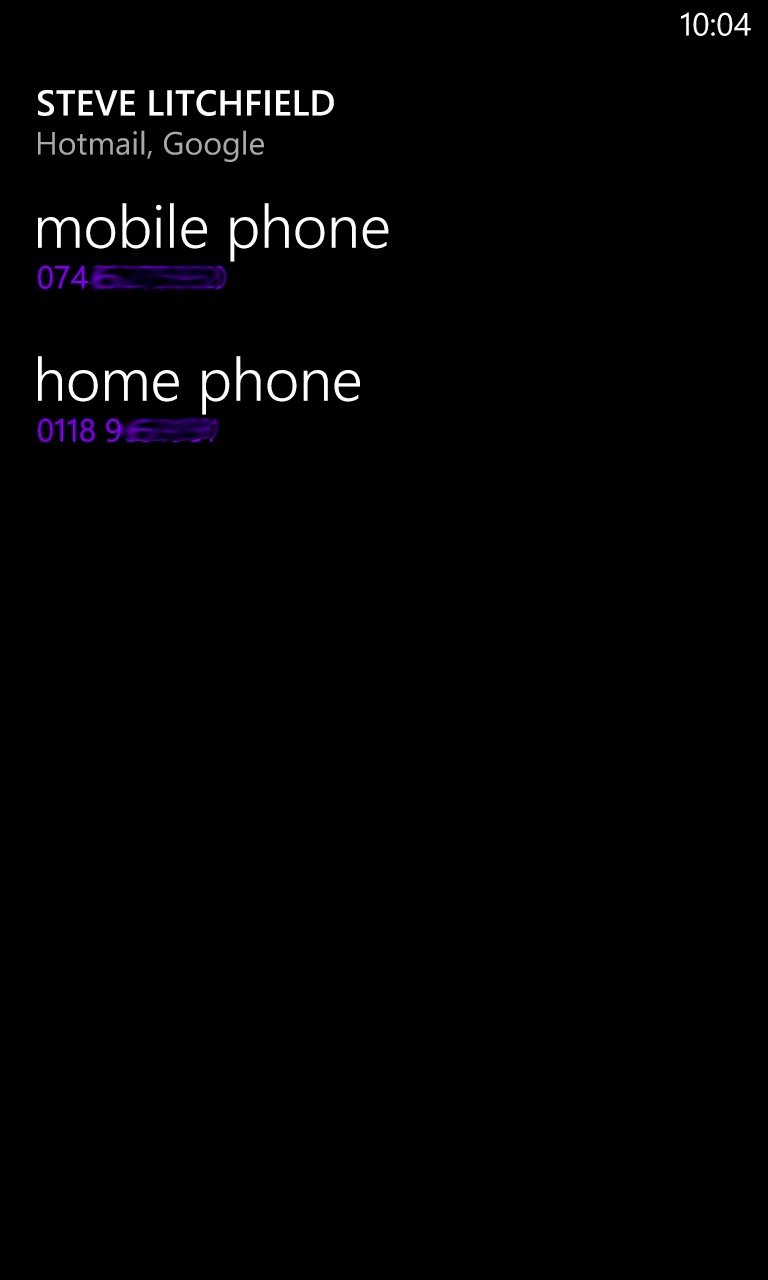
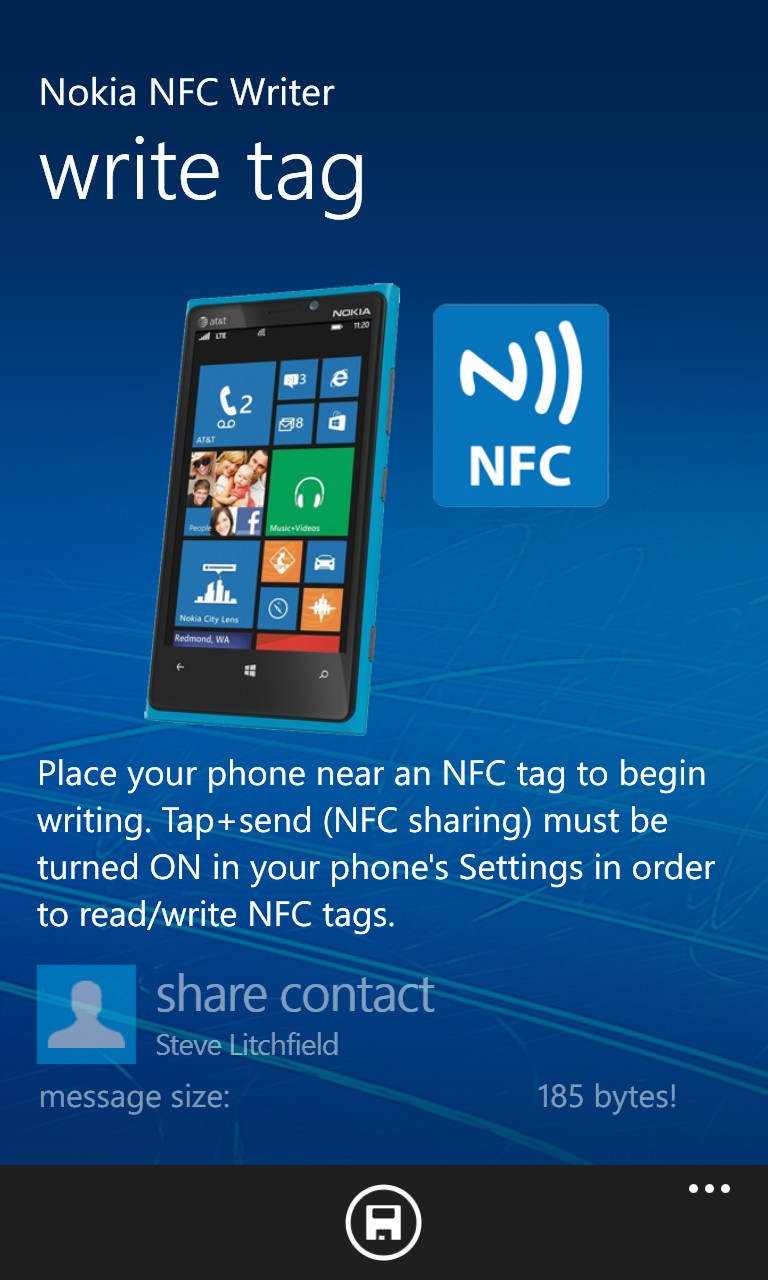
Curiously, only phone numbers seem to be supported using this mechanism - there's plenty of room on a typical 1K NFC tag for more (as you can see, I'm only transferring 185 bytes here), so it's not clear why the contact fields are so limited. Anyone able to clarify this? Maybe it's a limitation of using NFC writing on Windows Phone?
Leave a voice record for a family member or on an exhibit
I was intrigued by 'Create nearspeak record' on the panorama view. I hadn't heard of this before - it's a voice-to-text-to-voice system, created to run on Windows Phone 8. The idea is that you record a short piece, which then gets translated to text (or you can simply put in the text directly), the tag stores the raw text and then a friend or family member (or exhibit attendee) only has to tap on the tag to hear your message converted back to speech on their own smartphone.
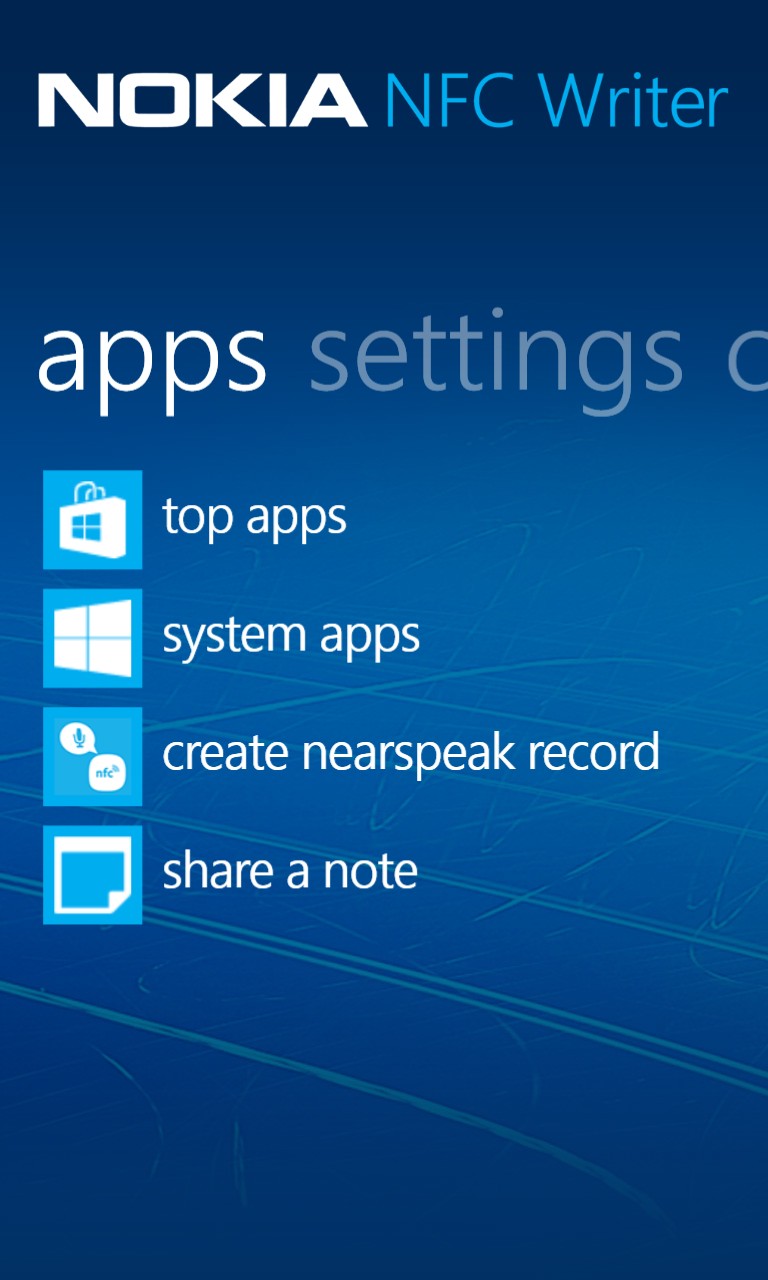
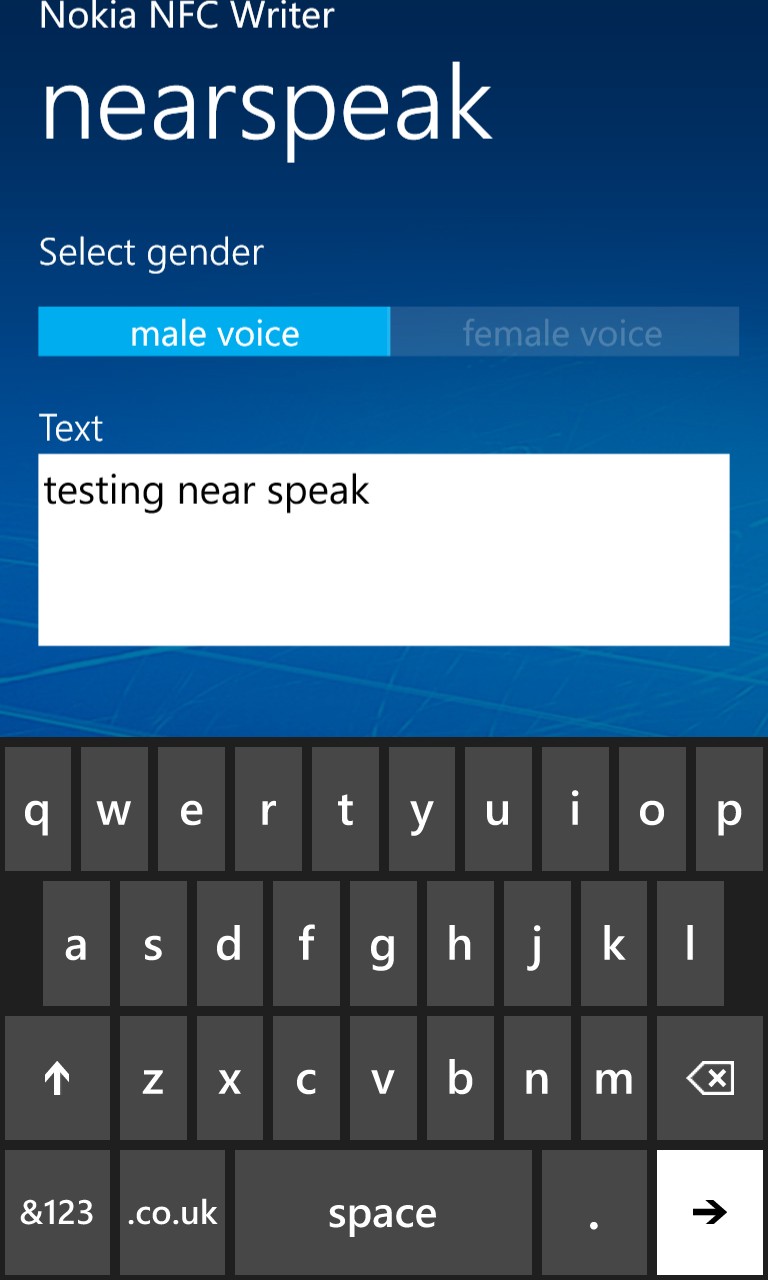
NFC Writer supports the text method, so type away. There's the extra attribute of being able to pick male or female intonation for the final result (important as you don't want the wrong gender delivering a personal message to your spouse, for example!)
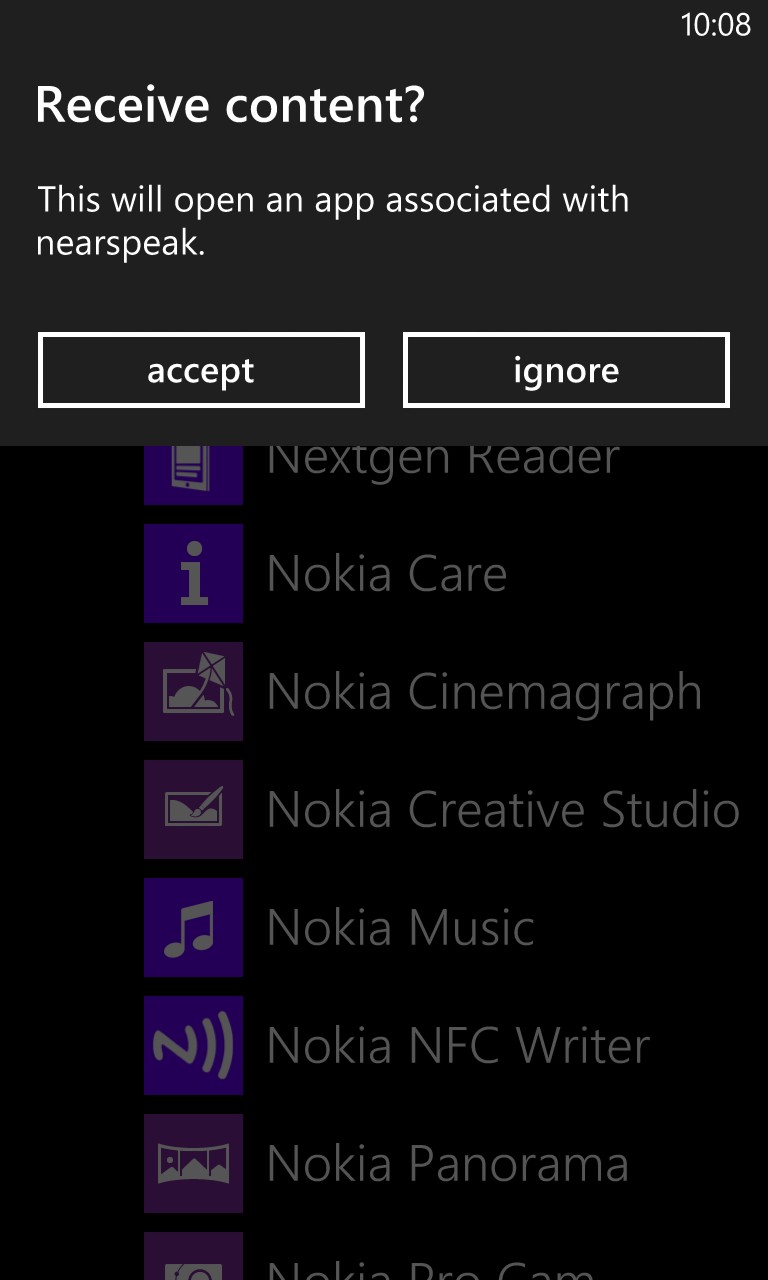
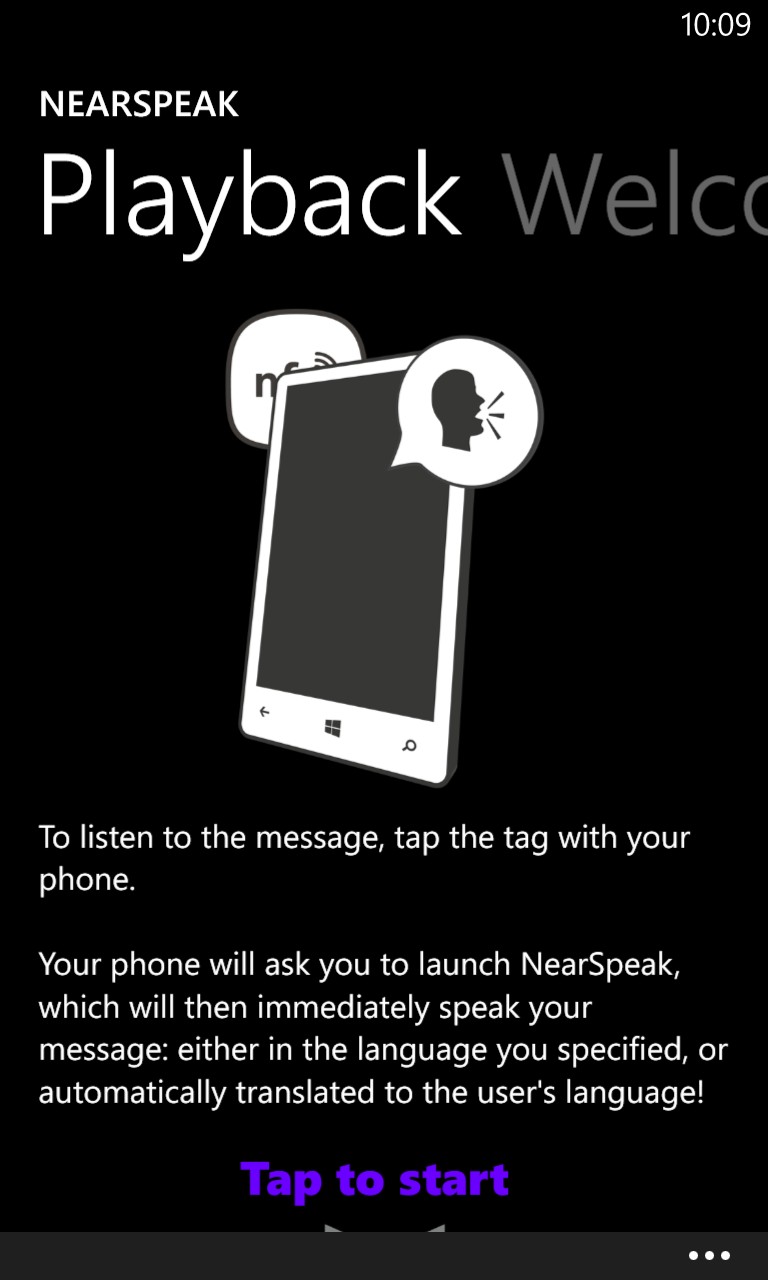
Tapping on the tag you've created starts the usual 'receive?' dialog, in this case looking for the Nearspeak application. If the recipient doesn't already have this then they'll be prompted to look for this in the Windows Phone Store.
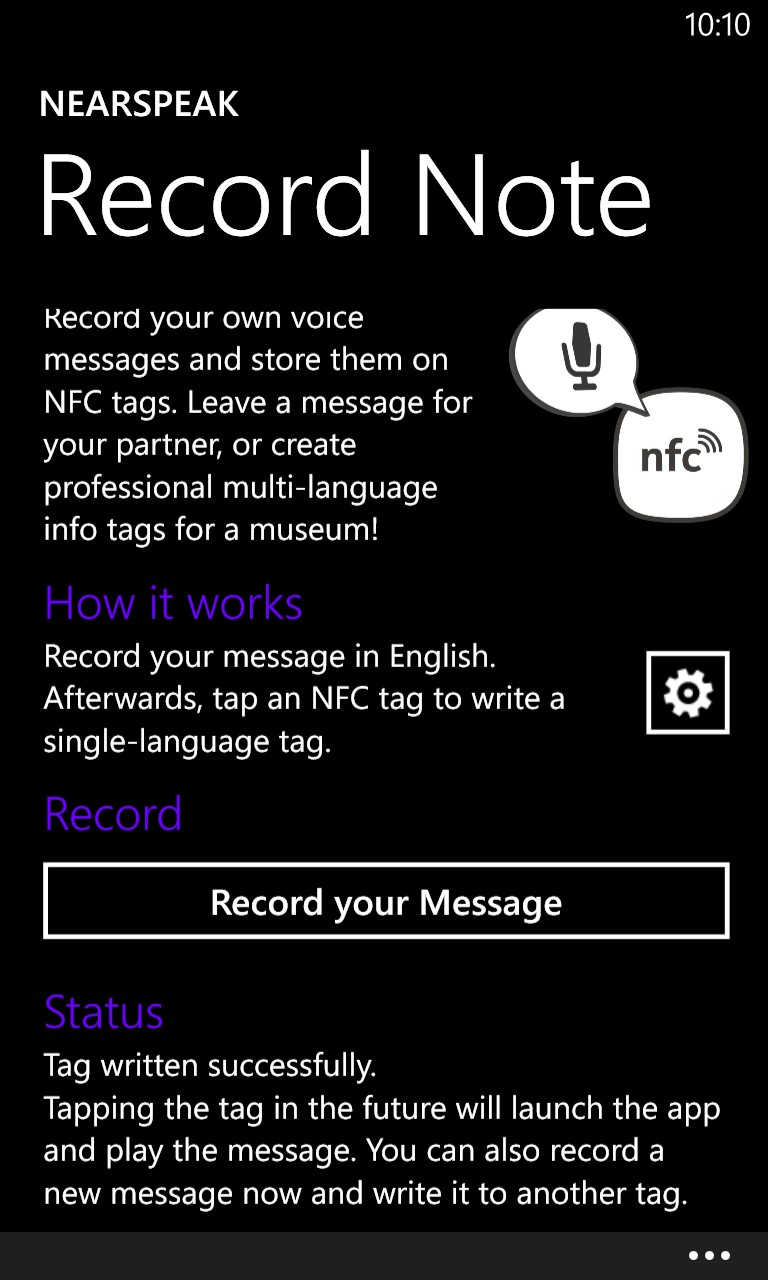
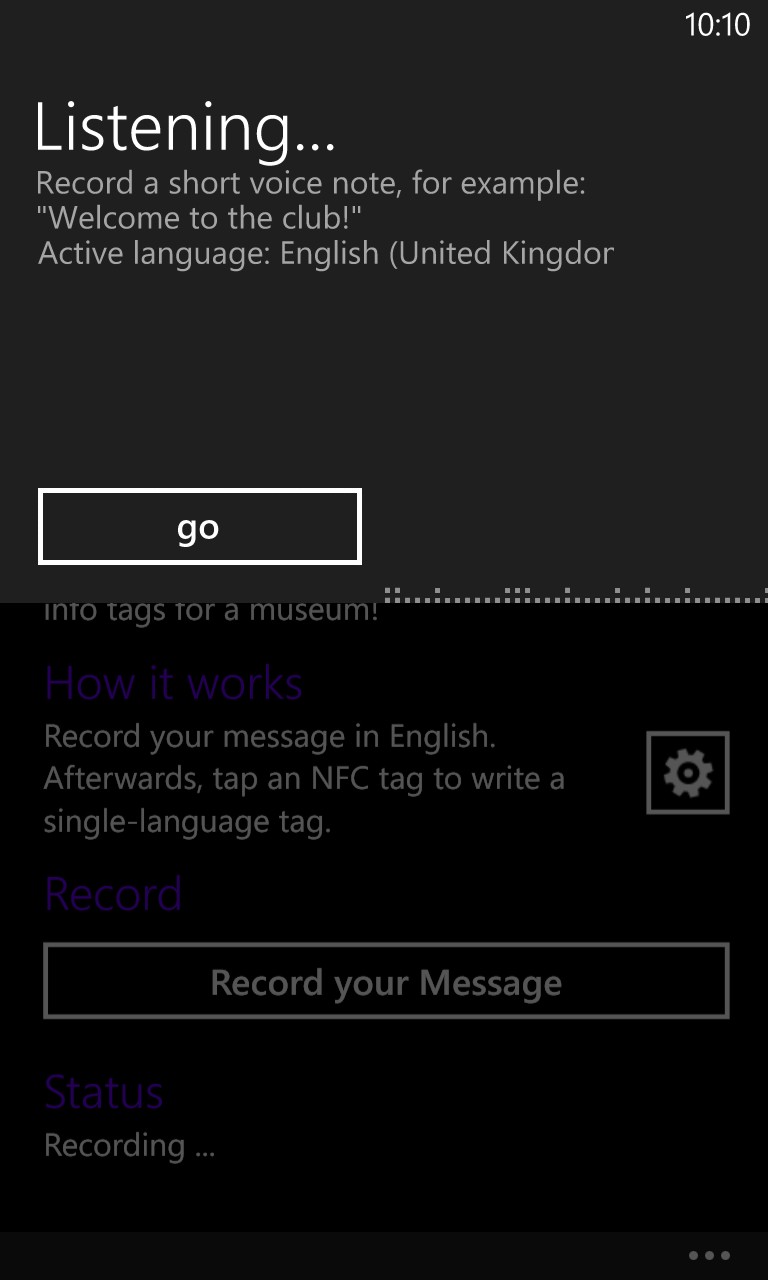
The Nearspeak application itself also offers the chance to do voice recognition in the first place, which might help if you had a longish phrase to input?
Notifying your partner that you've just left work and are on the way home
This might be useful to people for whom one of them works slightly irregular hours. So, for example, one partner would know when the other has just left work and would be able to put the oven on for tea? The idea here is that you tap your phone on a tag on your car dashboard (for example) or perhaps your office desk and this kicks off the production of the right message.
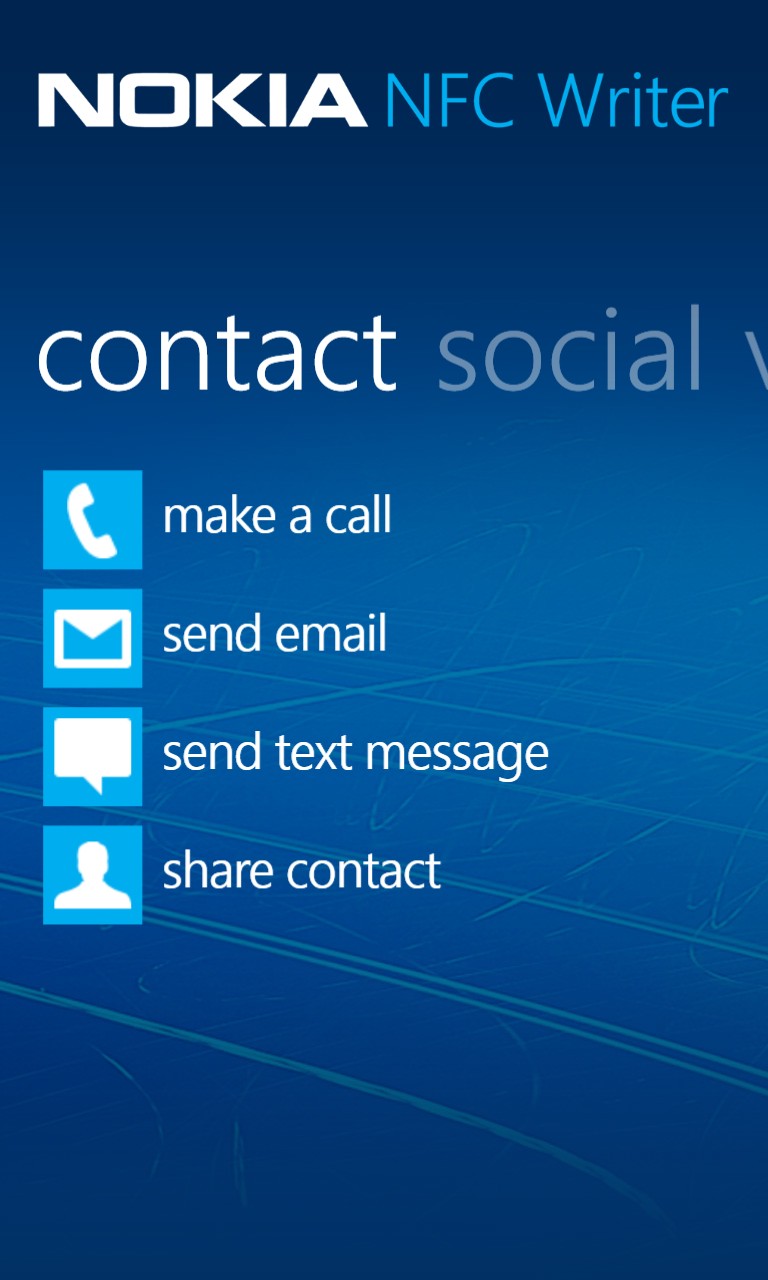
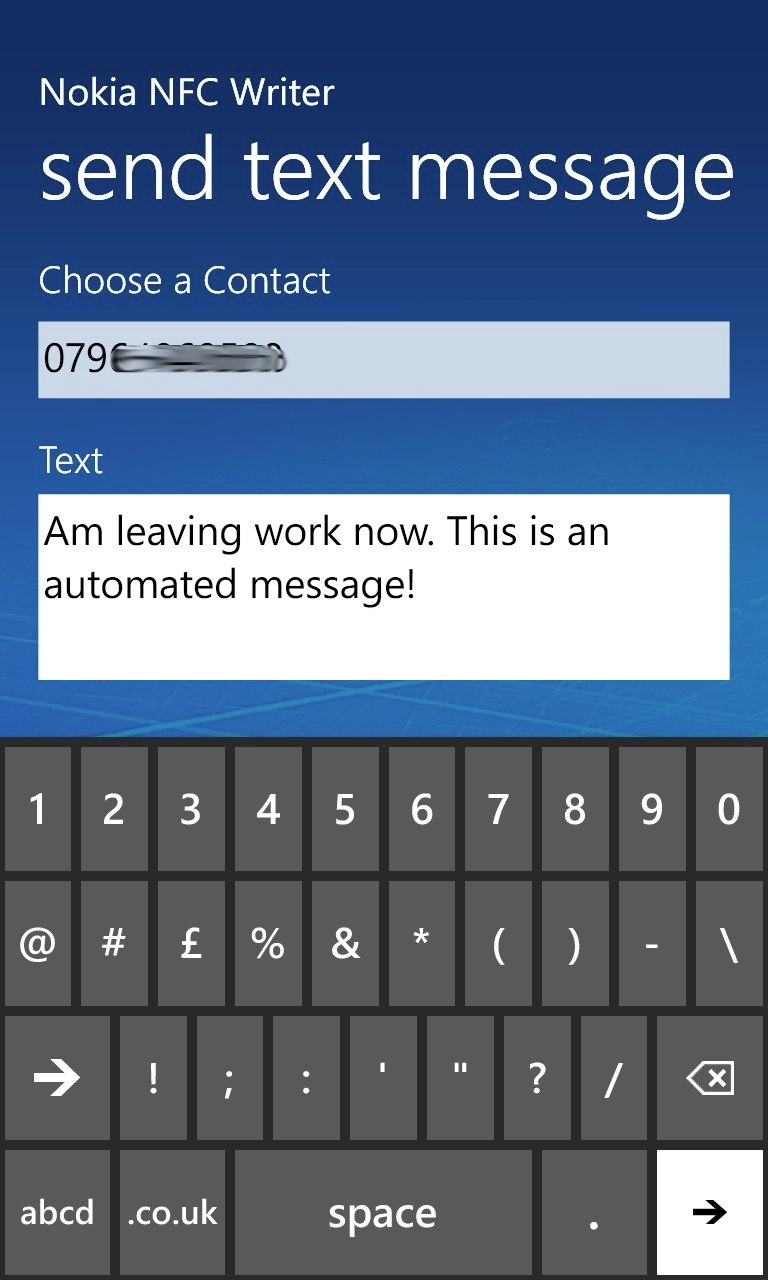
The contact could be via email, too, but we'll stick to text for now. Pick a contact and compose the appropriate generic text (e.g. to your partner)
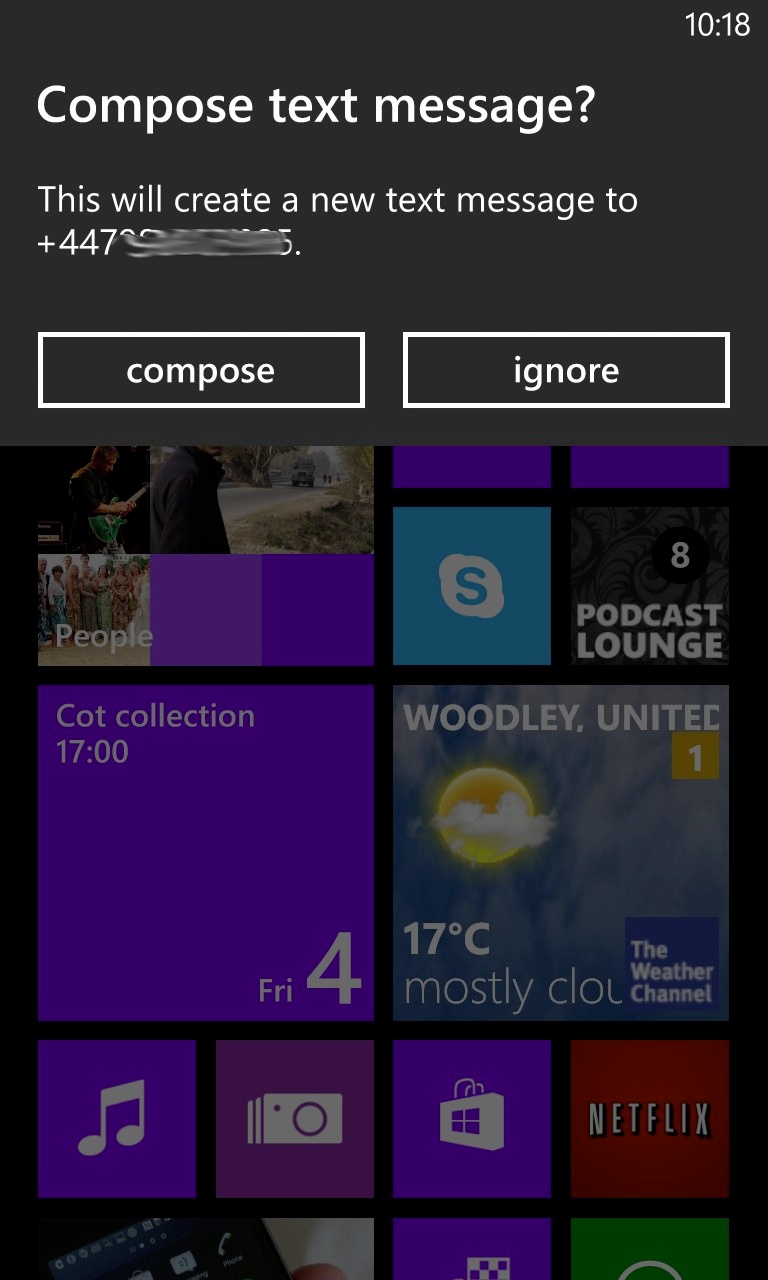
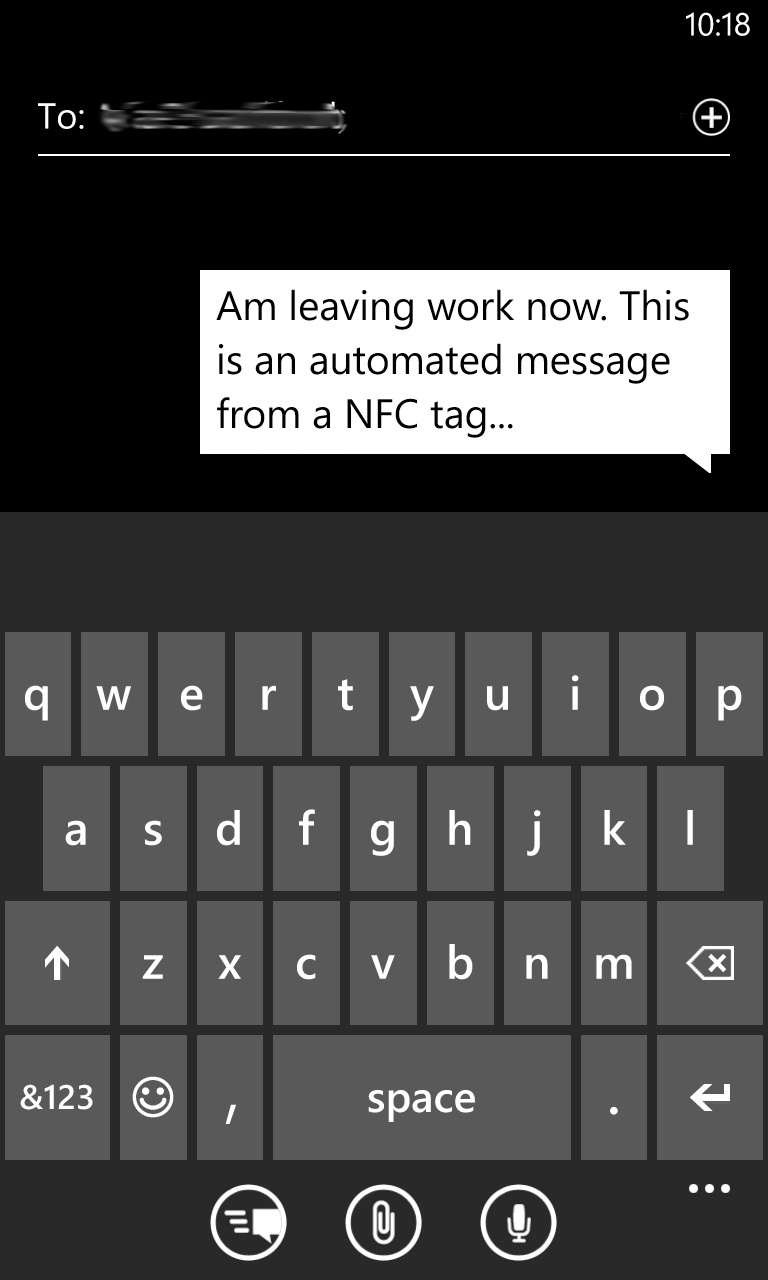
Having written the tag, tap on it to bring up this dialog. Tap on 'Compose' and you'll be in the Messaging application, ready to send. Here you might like to tweak the message if needed or just send it as-is.
Taps, taps, taps
It's probably evident in the text above that, for security reasons, there are possibly slightly too many taps in the whole process for something that's supposed to be automated and make your life easier. To take an extreme example, I also wanted to explore a NFC tag on the car dashboard for my 'home' location. My idea was that by tapping this, the phone could start navigating me home, but it transpires that, while you can indeed encode a location, the receiving phone simply shows this on a map and you then have to go through a multi-tap sequence to initiate any kind of route calculation and driving instructions. On Windows Phone, it's so much easier just to pin a Drive+ destination to your Start screen - one tap and you're ready to go.
On the whole though, things are often quicker with NFC tags to kick things off, but the time savings are can be quite small. The biggest advantages are when passing over cumbersome entities like URLs that save you fiddly typing on small smartphone screens - the traditional 'info' NFC tag use case.
Comments welcome if you have a use for custom NFC tag writing beyond my slightly simplistic examples here. What do you use the technology for?
Where do you get NFC tags from?
There are dedicated companies in this field, such as NFC Dog, which provided the samples for this feature and which specialises in providing advice and services to businesses wanting to get started with NFC, or you can also get tags from the likes of Amazon, in packs. And doubtless many other places too, best to pick up a pack of 10 so that you can have a really good play.

No hay comentarios:
Publicar un comentario